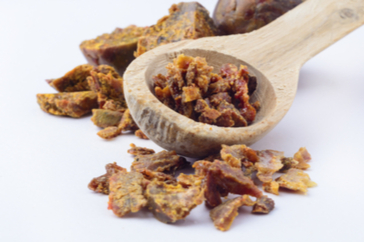Could housing stress be responsible for your cold sore outbreak?
 We all know that too much stress and insecurity can have a detrimental effect on our health, wellbeing and immune systems and, for those who carry the virus, increased reliance on cold sore creams.
We all know that too much stress and insecurity can have a detrimental effect on our health, wellbeing and immune systems and, for those who carry the virus, increased reliance on cold sore creams.
This above is of course true for everyone, but according to a new piece of research at the University of Stirling, tenants are at increased risk of poor health because of the difficulties they encounter in “feeling at home”.
This should come as little surprise; home is one of the great subjects, alongside love, family, death and sex, and if there is any question of doubt about the security of home it can be extremely destabilising.
The study, which Stirling University performed in conjunction with Dr Lisa Garnham from the Glasgow Centre for Population Health, looked at various types of rental housing arrangements and their respective impacts on the health and wellbeing of the tenants concerned.
Read more: Could housing stress be responsible for your cold sore outbreak?
The Sweetest Church in England
 Specialist bee removal experts were recently called to St Nicholas in Piddington, Oxfordshire, to relocate around 50,000 bees from the roof of the church after their superabundance caused honey to leak through the church’s ceiling and drip down its walls.
Specialist bee removal experts were recently called to St Nicholas in Piddington, Oxfordshire, to relocate around 50,000 bees from the roof of the church after their superabundance caused honey to leak through the church’s ceiling and drip down its walls.
There were also concerns about the structural integrity of the roof as the honey bee colony was unusually heavy and at least two metres long.
Rector, Rev Andrew Hayes told media outlets, "When people were coming to visit the church, they were uncomfortable with the number of bees that were there.
"So, that was what motivated us into action but we didn't want to just eliminate the problem; we wanted to make sure they were looked after and cared for."
Read more: The Sweetest Church in England
 Last month the NHS website published a news story detailing how a certain type of honey was as effective a cold sore treatment as the antiviral drug acyclovir.
Last month the NHS website published a news story detailing how a certain type of honey was as effective a cold sore treatment as the antiviral drug acyclovir.






 Cold sores typically occur just inside or just around the outside of the mouth and are spread by close contact such as kissing.
Cold sores typically occur just inside or just around the outside of the mouth and are spread by close contact such as kissing. We all know that too much stress and insecurity can have a detrimental effect on our health, wellbeing and immune systems and, for those who carry the virus, increased reliance on
We all know that too much stress and insecurity can have a detrimental effect on our health, wellbeing and immune systems and, for those who carry the virus, increased reliance on  Specialist bee removal experts were recently called to St Nicholas in Piddington, Oxfordshire, to relocate around 50,000 bees from the roof of the church after their superabundance caused honey to leak through the church’s ceiling and drip down its walls.
Specialist bee removal experts were recently called to St Nicholas in Piddington, Oxfordshire, to relocate around 50,000 bees from the roof of the church after their superabundance caused honey to leak through the church’s ceiling and drip down its walls. In some ways, bees are to planet Earth what canaries once were to coal miners. Canaries, as many may already know, served as an early warning system by becoming distressed or even dying when toxic gas in mine shafts reached dangerous levels.
In some ways, bees are to planet Earth what canaries once were to coal miners. Canaries, as many may already know, served as an early warning system by becoming distressed or even dying when toxic gas in mine shafts reached dangerous levels.




